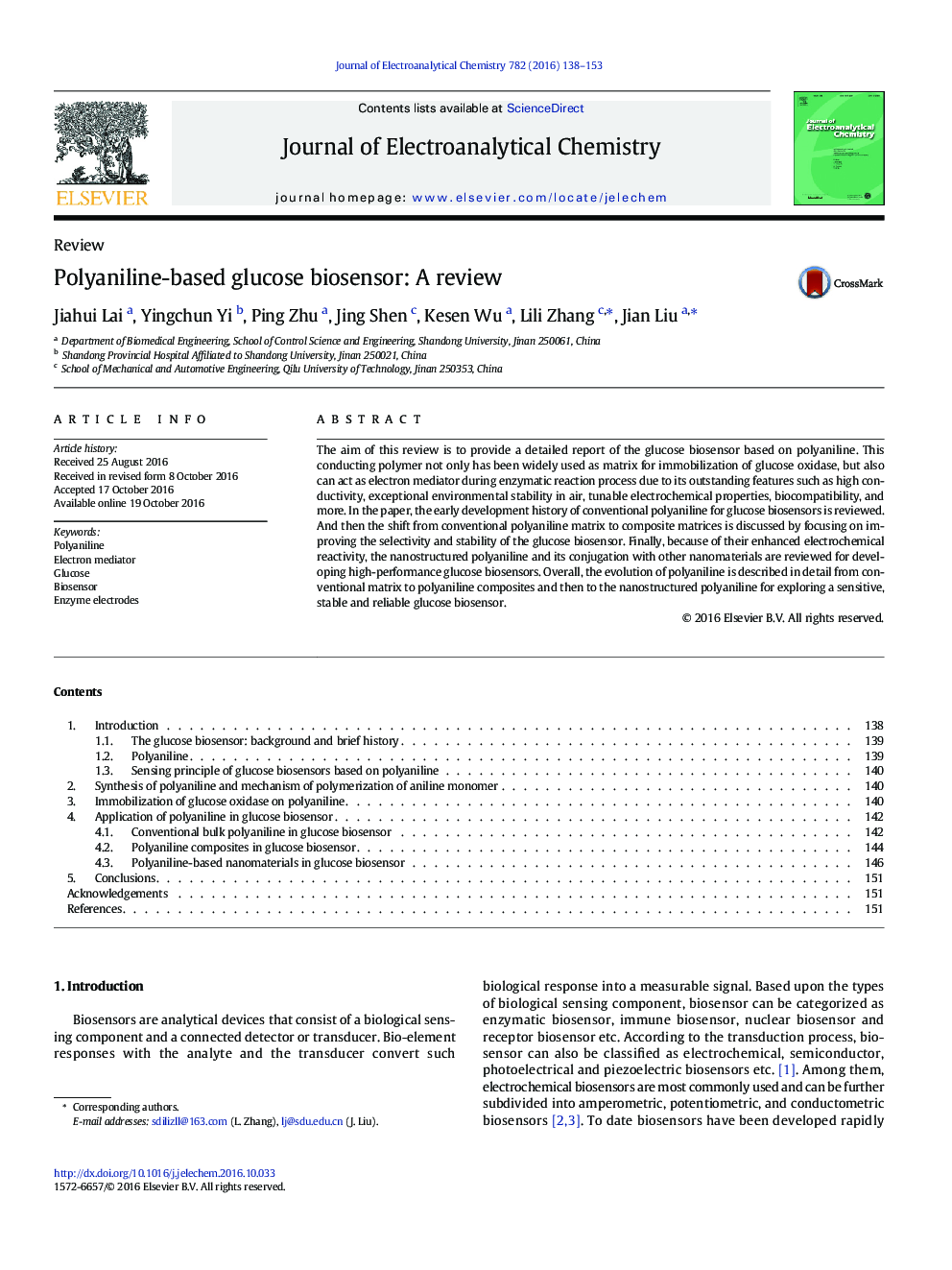| Article ID | Journal | Published Year | Pages | File Type |
|---|---|---|---|---|
| 4908246 | Journal of Electroanalytical Chemistry | 2016 | 16 Pages |
â¢Conventional bulk polyaniline was a suitable matrix for GOx immobilization.â¢Polyaniline composites improved the selectivity and stability of glucose biosensors.â¢Polyaniline-based nanomaterials contributed to development of glucose biosensors with high performance.
The aim of this review is to provide a detailed report of the glucose biosensor based on polyaniline. This conducting polymer not only has been widely used as matrix for immobilization of glucose oxidase, but also can act as electron mediator during enzymatic reaction process due to its outstanding features such as high conductivity, exceptional environmental stability in air, tunable electrochemical properties, biocompatibility, and more. In the paper, the early development history of conventional polyaniline for glucose biosensors is reviewed. And then the shift from conventional polyaniline matrix to composite matrices is discussed by focusing on improving the selectivity and stability of the glucose biosensor. Finally, because of their enhanced electrochemical reactivity, the nanostructured polyaniline and its conjugation with other nanomaterials are reviewed for developing high-performance glucose biosensors. Overall, the evolution of polyaniline is described in detail from conventional matrix to polyaniline composites and then to the nanostructured polyaniline for exploring a sensitive, stable and reliable glucose biosensor.
